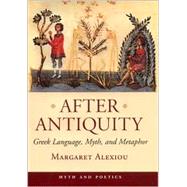
Note: Supplemental materials are not guaranteed with Rental or Used book purchases.
Purchase Benefits
What is included with this book?
| Foreword | xi | ||||
|
|||||
| Acknowledgments | xv | ||||
| A Note on Transliteration and Translations | xvii | ||||
| Introduction: Forward to the Past | 1 | (1) | |||
|
1 | (1) | |||
|
2 | (6) | |||
|
8 | (11) | |||
| PART I. LANGUAGE | |||||
|
19 | (24) | |||
|
20 | (2) | |||
|
22 | (1) | |||
|
23 | (4) | |||
|
27 | (2) | |||
|
29 | (3) | |||
|
32 | (4) | |||
|
36 | (7) | |||
|
43 | (23) | |||
|
43 | (2) | |||
|
45 | (7) | |||
|
52 | (3) | |||
|
55 | (4) | |||
|
59 | (7) | |||
|
66 | (30) | |||
|
66 | (11) | |||
|
77 | (4) | |||
|
81 | (15) | |||
|
96 | (55) | |||
|
96 | (4) | |||
|
100 | (11) | |||
|
111 | (16) | |||
|
127 | (24) | |||
| PART II. MYTH | |||||
|
151 | (21) | |||
|
151 | (1) | |||
|
152 | (4) | |||
|
156 | (1) | |||
|
157 | (2) | |||
|
159 | (2) | |||
|
161 | (3) | |||
|
164 | (1) | |||
|
165 | (2) | |||
|
167 | (5) | |||
|
172 | (39) | |||
|
172 | (4) | |||
|
176 | (4) | |||
|
180 | (3) | |||
|
183 | (6) | |||
|
189 | (22) | |||
|
211 | (55) | |||
|
216 | (5) | |||
|
221 | (10) | |||
|
231 | (4) | |||
|
235 | (14) | |||
|
249 | (4) | |||
|
253 | (7) | |||
|
260 | (2) | |||
|
262 | (4) | |||
|
266 | (51) | |||
|
267 | (8) | |||
|
275 | (2) | |||
|
277 | (9) | |||
|
286 | (10) | |||
|
296 | (14) | |||
|
310 | (7) | |||
| PART III. METAPHOR | |||||
|
317 | (32) | |||
|
317 | (2) | |||
|
319 | (6) | |||
|
325 | (3) | |||
|
328 | (4) | |||
|
332 | (13) | |||
|
345 | (4) | |||
|
349 | (62) | |||
|
352 | (9) | |||
|
361 | (11) | |||
|
372 | (2) | |||
|
374 | (3) | |||
|
377 | (4) | |||
|
381 | (3) | |||
|
384 | (5) | |||
|
389 | (7) | |||
|
396 | (3) | |||
|
399 | (6) | |||
|
405 | (2) | |||
|
407 | (4) | |||
| Conclusion: Backward to the Present | 411 | (4) | |||
| Appendix: Romanos the Melodist (Fifth to Sixth Centuries A.D.) | 415 | (38) | |||
| Notes | 453 | (50) | |||
| Key to References to Songs and Tales | 503 | (2) | |||
| Bibliography | 505 | (42) | |||
| General Index | 547 | (16) | |||
| Index of Themes and Images | 563 |
The New copy of this book will include any supplemental materials advertised. Please check the title of the book to determine if it should include any access cards, study guides, lab manuals, CDs, etc.
The Used, Rental and eBook copies of this book are not guaranteed to include any supplemental materials. Typically, only the book itself is included. This is true even if the title states it includes any access cards, study guides, lab manuals, CDs, etc.